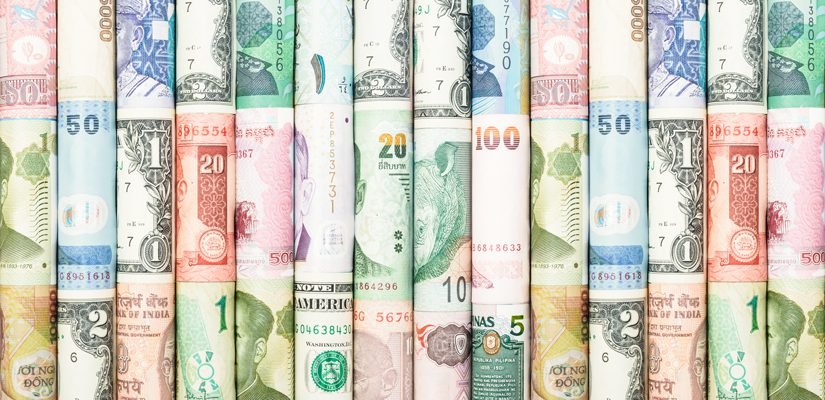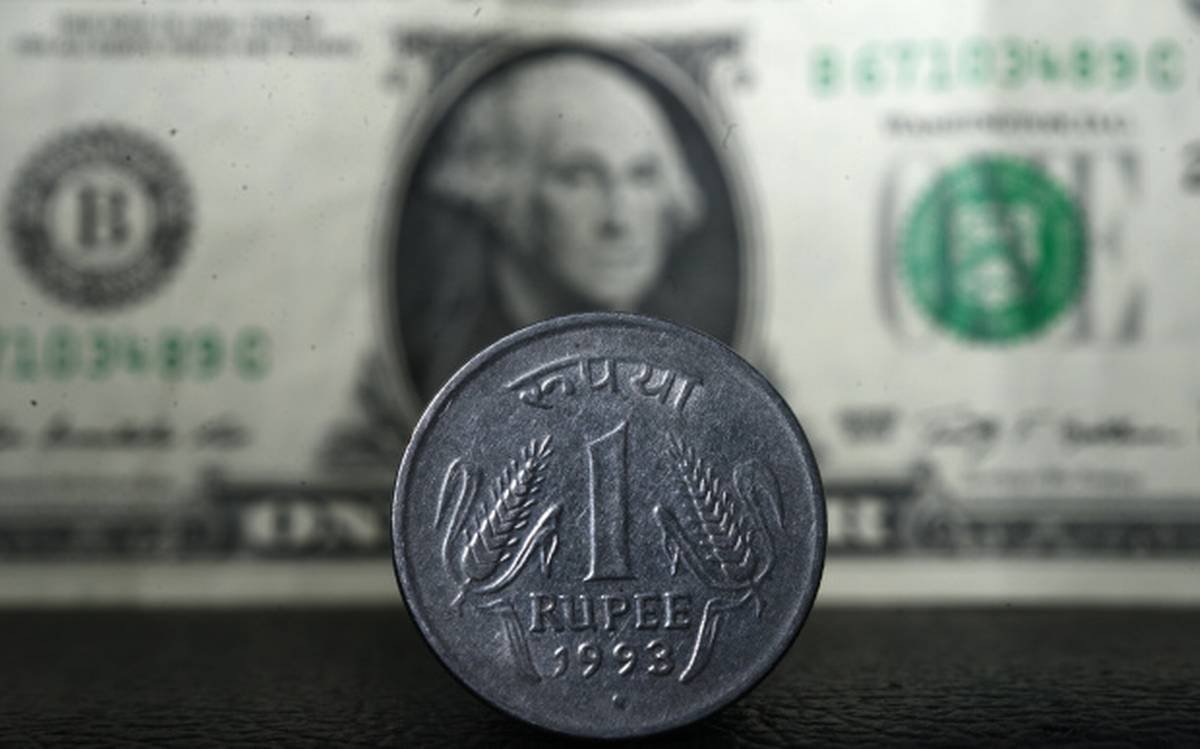Welcome to our daily pre-market update, where we comprehensively analyze the Indian rupee’s performance in the currency markets. In this article, we will delve into the previous day’s trading session, examining the critical movements of the rupee against major currencies such as the US dollar (USD), British pound (GBP), Euro (EUR), and Japanese yen (JPY). Additionally, we will offer insights into what we can expect from the rupee in today’s trading session.
Date- July 17, 2023
Place- New Delhi, India
USDINR
The USDINR currency pair, with a current bias towards range-bound trading, is noted to fluctuate within the specific trading range of 81.90 to 82.30. Recent trading patterns show that this pair has been oscillating within a fairly confined space, between 81.70/80 and 82.80, suggesting that extensive analysis may not yield substantial predictive insights.
This phenomenon can be primarily attributed to the Reserve Bank of India’s strategic interventions, which have successfully managed to dampen any intense volatility and limit the pair’s movement to a tight band of 1 rupee. The absence of any profound global financial triggers makes it even more difficult to anticipate any breakouts from this range set by the central bank.
The weakening dollar exerts a slight downward force on this pair, although it’s not significant enough to drive it below the established trading range.
In terms of intra-day trading predictions, the prevailing slightly risk-off sentiment in the Asian financial markets could potentially nudge the USDINR pair towards the higher end of the range at 82.30. For futures trading, it would be prudent to consider buying on the dips with a set stop loss positioned below 81.90.
Intra-day traders can optimize their strategies by leveraging call options to benefit from minor price fluctuations. However, when employing strategies like short straddle and strangle, it’s crucial to exercise caution and maintain diligent stop-loss protocols to mitigate potential losses.
GBPINR
The GBPINR currency pair is currently on an upward trend, trading within the range of 107.30 to 107.90. This week, the direction of GBPUSD and GBPINR will hinge on significant economic indicators from both the UK and the US, including inflation, retail sales figures, and more.
The UK’s Consumer Price Index (CPI) is projected to escalate by 8.2% Year-over-Year (YoY) in June, while core inflation is anticipated to recede to 6.8%. The Bank of England (BOE) has been grappling with the challenges of high inflation coupled with sluggish growth, prompting market expectations of a 50-basis point rate hike in August.
This environment, bolstered by rising UK yields and a softening US Dollar, has helped push the GBPINR pair near its 2013 peak at 108.00. Should the UK’s economic data surpass expectations, the pair might be driven to a new all-time high.
In light of these factors, a strategy of ‘buying on dips’ is recommended for today’s trading session. Crucial support levels for futures trading have been identified at 107.40 and 107.25, while resistance is expected near the 108.00 and 108.25 marks.
EURINR
The EURINR currency pair is currently on an upward bias, fluctuating within the range of 91.95 to 92.55. This ascending trend is fueled by the weakening of the US Dollar, which has bolstered EURUSD, and the steady performance of USDINR above the 82.00 level.
This week’s spotlight will be on the US retail sales data. A disappointing outcome could potentially enhance the strength of EURUSD and subsequently push EURINR even higher. Already, EURINR has managed to surpass previous records, reaching an all-time high at the 92.34 mark, revisiting levels last seen in 2013.
Should the US retail sales figures come in lower than expected, we could see EURINR climbing to a new all-time high within the week. For futures trading, it is projected that key support will be found around 92.00 and 91.75, while resistance is expected to emerge near the 92.40 and 92.65 levels. With these conditions in place, the bias for the EURINR pair remains skewed towards the upside.
JPYINR
The JPYINR currency pair is currently exhibiting a range-bound behavior, oscillating between the 59.20 and 59.65 range. The USDJPY pair has recently experienced a bounce back from its support level of approximately 137.25. However, it’s too soon to declare that a definite bottom has been established.
In the context of JPYINR, robust support is projected to surface around the 59.00 mark. For futures trading, resistance is expected at the 59.65 and 59.90 levels. These conditions indicate that a trading strategy adhering to the rangebound nature of JPYINR would be appropriate under current market circumstances.
Key Points to Consider Today
U.S. stock markets closed predominantly in the red on Friday, ending the S&P 500 index’s four-day winning streak. However, the S&P 500, Dow Jones Industrial Average, and Nasdaq Composite all managed to record weekly gains, with the Dow Jones rising by 2.3%, the S&P 500 increasing by 2.4%, and the tech-centric Nasdaq surging by 3.3%.
Investors have been keeping a close eye on bank earnings and economic indicators, such as the University of Michigan’s consumer sentiment survey. The survey reported a jump to 72.6 in its preliminary July reading from June’s figure of 64.4. This is the largest surge since December 2005, marking the highest consumer sentiment level since September 2021. Big-name banks like JPMorgan Chase & Co., Wells Fargo & Co., and Citigroup Inc. exceeded expectations with their reported earnings and revenue.
Friday saw the rally in both bonds and stocks hit a roadblock, with robust economic data suggesting that it may be premature for the Federal Reserve to declare victory over inflation. Meanwhile, the dollar, after several days of decline, steadied on Friday, marking its worst week in eight months as traders dialed back their bets on further interest rate hikes by the Federal Reserve.
The merchandise trade deficit in India decreased to $20.13 billion in June, compared to May’s $22.1 billion. The slight reduction in the deficit is due to a larger fall in imports compared to exports. Additionally, the Ministry of Finance has increased the windfall tax on domestically produced crude oil to Rs 1,600 per tonne, effective from July 15.
According to the government data released on Friday, India’s annual wholesale prices fell for the third consecutive month in June, mainly due to lower fuel and power prices. The wholesale price index (WPI) dropped 4.12% in June, marking the lowest level since September 2015.
China reported its second-quarter gross domestic product grew by 6.3% YoY, falling short of expectations. However, the Chinese retail sales for June and industrial production figures were generally better than anticipated, although the unemployment rate among young people (aged 16 to 24) hit a record 21.3% in June.
Asian stocks declined after the U.S. bond and stock rally paused on Friday amid fears that the Federal Reserve is still grappling with inflation. On the other hand, the Indian benchmark indices, the Sensex and the Nifty, reached new record closing highs on July 14, with broader markets continuing to perform well during the earnings season.
Disclaimer
CurrencyVeda provides information purely for educational purposes. We are not financial advisors or brokers. The content we provide should not be taken as financial advice or a recommendation to buy or sell any sort of investment or security. Always perform your own due diligence and consult with a licensed professional before making any investment decision.



